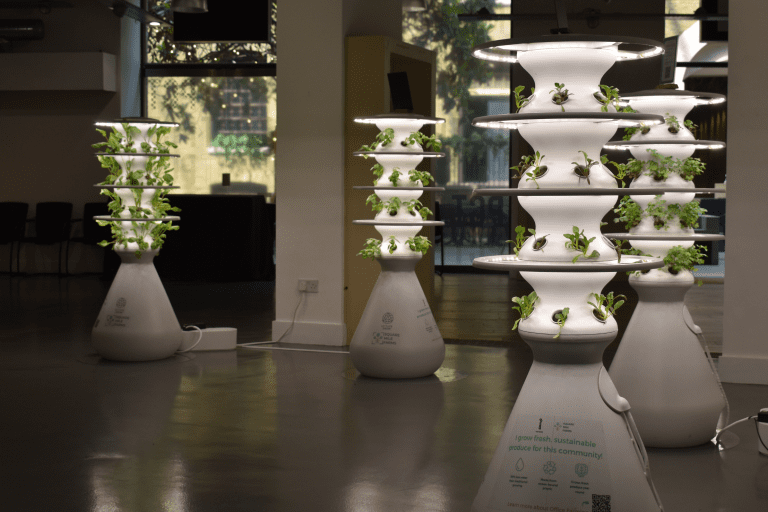Start-ups tackling some of the world’s biggest sustainability challenges have the chance to supercharge their business and pilot their technology with Amazon, as part of the third edition of the Amazon Sustainability Accelerator. The 15 starts-ups from across Europe will benefit from a four-week programme featuring expert-led workshops, specialised mentorship, a tailored curriculum and access to a network of entrepreneurs in the sustainability sector. This year, for the first time, they also have the opportunity to pitch their technology for a trial in Amazon’s European operations, opening doors to future partnerships and Europe-wide implementation, earning them up to €2m each. The 15 selected start-ups span a diverse range of geographies and demographics, headquartered across 10 countries and together employing more than 600 people. From tackling issues arising from fast fashion, to reusable packaging and AI, the start-ups are focused on scaling their business in one of three categories: circular economy, energy in buildings, and packaging. Since launching in 2022, the Accelerator has supported more than 25 start-ups across the UK and Europe, provided over US $1 million in grants and credits, and helped participating businesses increase total sales on average by 700% and raise over €18.7 million to date. This year, Dublin based HT Materials Science joins the Accelerator. Founded in 2018, the start-up has developed a simple retrofit solution that improves heating and cooling systems. The technology can be added to any existing commercial and industrial heating and cooling system, reducing energy consumption and enabling cost savings. “Building operations pose one of the most vexing challenges in the fight against climate change. Between 1990 and 2020, energy used for cooling tripled and will continue to increase as global economies expand and temperatures rise,” said Thomas Grizzetti, CEO of HT Materials Science, “Our Maxwell heat transfer fluids offer an immediate, cost-effective way to reduce the energy consumption of environmental and industrial cooling and heating systems by up to 15% while significantly reducing CO2 emissions. We believe Amazon’s Sustainability Accelerator Program will help us expand our reach to more clients and facilities around the world that can benefit from Maxwell.” In the UK, three start-ups join the Amazon Sustainability Accelerator: ACS Clothing, Cheesecake Energy and Breathe Batteries. Glasgow-based ACS Clothing works with renowned brands and retailers like The North Face and Timberlandto extend the life of garments via its cleaning and repair service. Cheesecake Energy, a University of Nottingham spinout, has developed a technology system that stores surplus energy generated by a solar power plant during the day, to provide access to renewable energy for the site during non-solar producing hours. Based in London, Breathe Batteries, has built a software that can be used in any lithium-ion battery to enhance its performance and improve the charging time and lifecycle. The Amazon Sustainability Accelerator is a four-week programme designed to help start-ups navigate the challenges of scaling a sustainability business. Participants will meet and work with experts in Amazon’s Sustainability, Climate Pledge Fund and Climate Pledge Friendly teams, attend workshops, receive mentorship and €10,000 worth of AWS Activate Credits. For the first time this year, start-ups will have the opportunity to pitch to key decision makers for the chance to integrate their cutting-edge innovation directly into parts of Amazon’s business. During the four weeks, they will benefit from tailored support to help align them to Amazon’s needs and goals, following which they will pitch their pilots. Three start-ups will be selected to partake in an eight to ten week programme to scope their pilot with the intention to launch, earning them a potential contribution from Amazon of between €50,000 to €2 million, depending on duration and scope. “I’m so excited to welcome 15 ambitious start-ups to join the Amazon Sustainability Accelerator this year, including our first ever Climate Tech Pilot,” said Zak Watts, Amazon’s International Director of Sustainability. “The scope of businesses involved means we can support even more entrepreneurs to reach their potential. Not to mention the one-of-a-kind opportunity to test their technology directly with parts of Amazon’s business. It is our mission for the Amazon Sustainability Accelerator to be the best programme of its kind in the world for entrepreneurs to pioneer and scale cutting-edge sustainable solutions.” This year’s expanded Amazon Sustainability Accelerator is a partnership with EIT Climate-KIC, Europe’s leading climate innovation agency, and innovation strategy consultants Founders Intelligence, part of Accenture. The Amazon Sustainability Accelerator start-ups were chosen from hundreds of applications, with each of the selected start-ups bringing an innovative solution, strong sustainability credentials, and high growth potential to the table. The later-stage start-ups have moved beyond prototype testing and are working towards generating initial revenue and growing operations, having been selected from three key areas: circular economy, energy in buildings and packaging. Ezra Konvitz, Director & Head of Accelerators, Founders Intelligence: “We love finding the ways major companies can work with leading start-ups creating the future. The incredible start-ups and technologies that are part of the Pilot Challenge cohort give cause for hope – if we can help them find the best ways to work with Amazon’s scale we’ll achieve a game-changing impact.” Building, Design & Construction Magazine | The Choice of Industry Professionals














